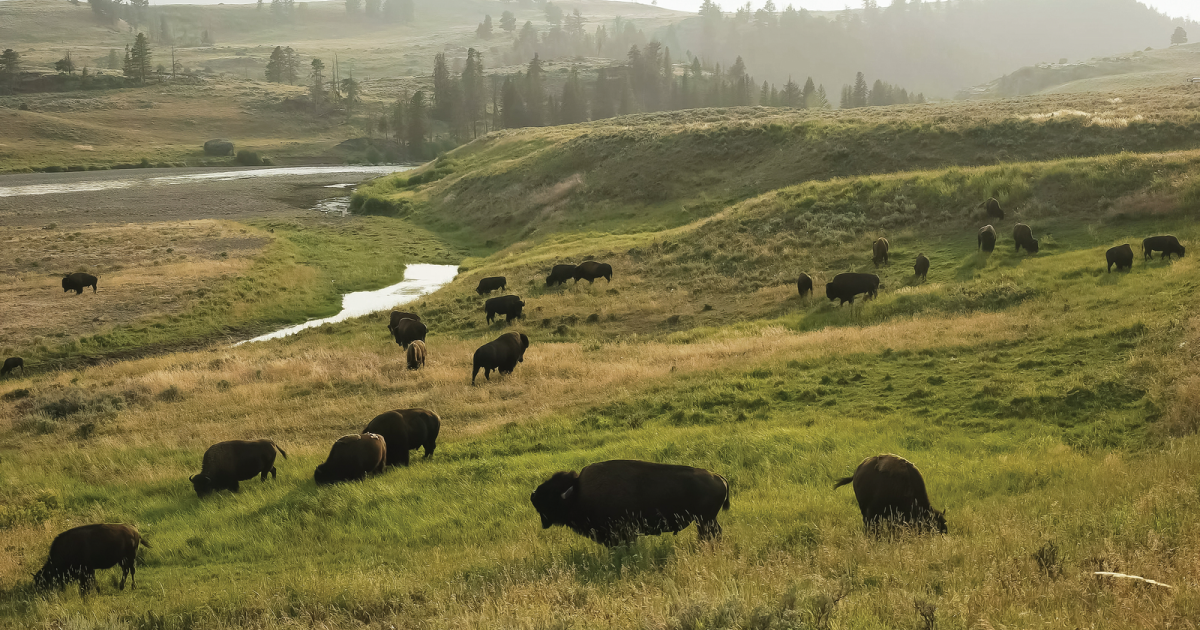
Study: Yellowstone Bison Mow, Fertilize Their Own Grass
A study of grazing in Yellowstone National Park found that bison essentially mow and fertilize their own food. This allows them to graze in one area for two to three months during the spring and summer while other hoofed mammals must keep migrating to higher elevations to follow new plant growth.
November 21, 2019 | Source: AP News | by
A study of grazing in Yellowstone National Park found that bison essentially mow and fertilize their own food. This allows them to graze in one area for two to three months during the spring and summer while other hoofed mammals must keep migrating to higher elevations to follow new plant growth.
Hundreds of bison grazing in an area stimulates the growth of nutritious grasses, in part because their waste acts as a fertilizer, according to research published this week in the Proceedings of the National Academy of Sciences.
“They add fertilizer through urinating and defecating, they drop nutrients back on the landscape, which are then available to plants,” Yellowstone scientist Chris Geremia said Wednesday.
“It’s almost like the bison become this giant fleet of lawnmowers moving back and forth across the landscape,” he said.
When more bison grazed an area more intensely, the area greened up earlier and faster and the grass stayed greener and had a higher nutritional quality for a much longer time, Geremia said.
